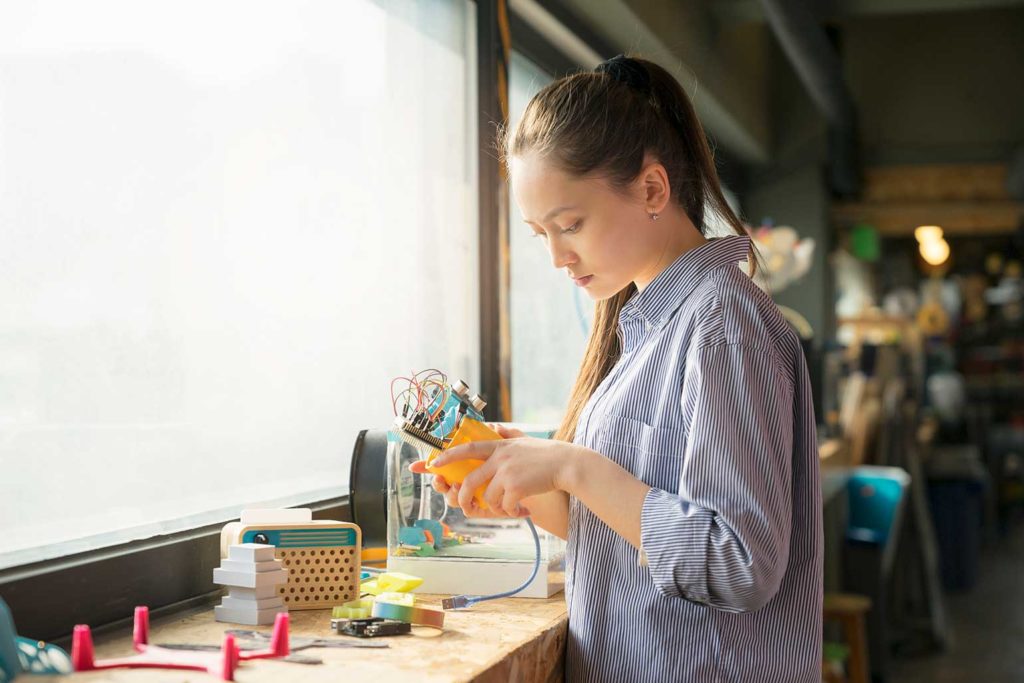We all know that engineering is a male-dominated field, and the data proves it: based on the latest census, just 12.4 per cent of engineers in Australia are women. What’s more, these numbers aren’t trending upwards at the rates we need.
The Chief Scientist recently released a report about Australia’s STEM workforce, which highlighted that women with STEM-related university qualifications have only grown from 26 per cent to 29 per cent between 2006 and 2016.
That’s not to say we’re not doing good work in Australia. It’s heartening to see the growing number of initiatives across industry, government, education and the not-for-profit sector that celebrate, inspire and encourage women in STEM.
But addressing equality in the engineering profession is not just about encouraging students in high school. A career in engineering is a possibility for any child. We need to consider each part of this career and how we can commit to making change, so that we remove gender stereotypes, inspire our next generation of engineers, create a professional culture of inclusivity, and retain the talent we already have.
Indeed, the Federal Government has developed an action plan to encourage gender equity in STEM, focusing on three key areas that encompass various stages of a STEM career. This is important, as we need to make sure we are all putting effort into making change across the entire STEM pathway.
Starting young
Did you know that when asked to draw a scientist, two thirds of children aged between 9 and 11 will draw a man? Or what about the fact that girls in Year 4 are less confident in their maths abilities than boys?
This is a startling revelation, because if we wait until young women are in Year 9 or 10 to introduce them to engineering, we’re too late.
The biases they have formed based on what they see are already ingrained, and even if they learn that engineering is cool when it’s time to choose their senior school subjects, they need to overcome the societal messages that may have told them girls are no good at maths or that engineering is for boys.
Young children should be exposed to STEM and engineering as something exciting as soon as they are old enough to see the world.
The leaky pipeline
The work doesn’t stop once a young woman has enrolled in an undergraduate engineering degree. There, she needs support and mentoring to believe that she can be an engineer. She needs role models to help her see what’s possible, and she needs support as she transitions from the education system to the workforce.
But did you know that statistics show we might lose her at crucial points in her career path?
Known as the “leaky pipeline”, this is evidence that we cannot focus our energy in only one place: we must consider how we can create a supportive and inclusive profession where all people can thrive.
This starts with the messages we teach our young children about gender stereotypes, and how we engage them in science- and engineering-related activities. It’s then how we educate students through primary and secondary school.
You can’t be what you can’t see
Along with focusing on education, we must also continue to support and celebrate role models. We have to show children, and young women, what they can be, and that there are infinite careers paths available to them.
It was heartening to see many men in my LinkedIn network sharing kind words about inspiring women they work with on International Women in Engineering Day this year. We can’t keep this to one day of the year though — we must create opportunities for all people to use their voices, and create a better world for us all.
Committing to cultural change
While it’s great to see the number of initiatives and conversations on this topic growing, I can also see the frustration in what is very slow change. We have a commitment from the highest levels of government to create change, with the goal to bring balance, but for the numbers to shift we need true cultural change so that our young people are inspired by engineering, maths and science, and our workforce work from a place of inspiration too.
In a recent episode of Harvard Business Review’s Ideacast podcast, cultural change was described as needing to be quick, not over five or ten years time. If we are truly committed to the cause, organisations, governments and individuals need to go all in.
We need to treat this with urgency because, until we have a workforce harnessing the talent pool of everyone, we are not truly tapping into our potential to address the most pressing of global challenges.
And so we can’t give up. The next step, as I see it, will require collaboration and holistic, strategic efforts across the entire STEM pathway, and it’s for everyone to get involved. Imagine if every organisation put energy behind this effort, and empowered their people to get behind this movement? What change could we make? What ripple effect might we create?
If you are an individual with a desire to help in some way, I would encourage you to get involved in a part of the pipeline you are passionate about, and especially where you are already connected.
If you have a daughter in primary school, connect at this point in the pathway. If you are a senior executive, you could support, mentor and sponsor emerging leaders. I truly believe that when individuals and organisations align their efforts, a true revolution might happen.
